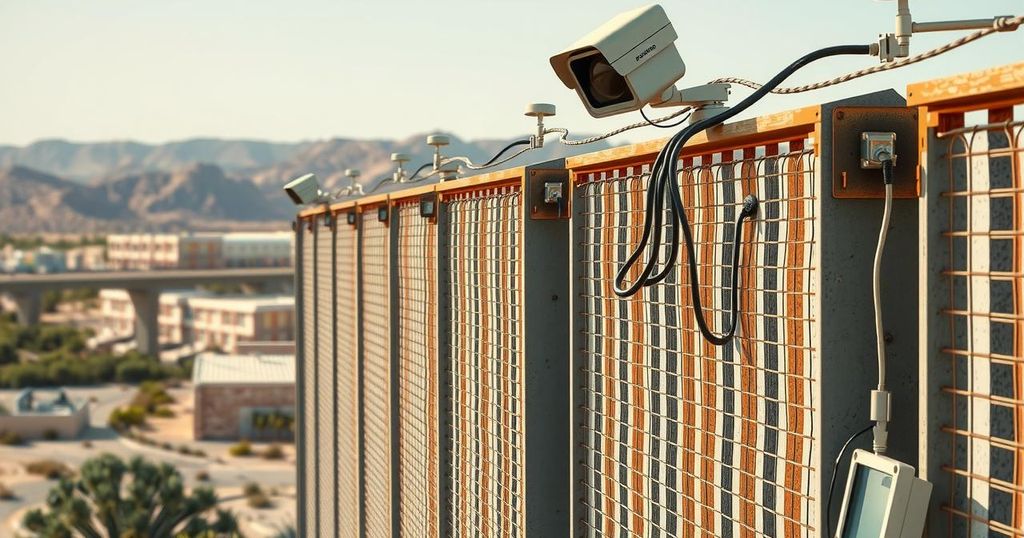World news
2024 PRESIDENTIAL ELECTION, ADAM ISACSON, AMERICA, ASIA, CONGRESS, CUSTOMS, DONALD TRUMP, HOMELAND SECURITY, HOUSE, HOUSE HOMELAND SECURITY COMMITTEE, IMMIGRATION, IMMIGRATION AND CUSTOMS ENFORCEMENT, LA, LEGISLATION, LOS ANGELES, MEXICO, MIKE JOHNSON, NORTH AMERICA, PHILIPPINES, POLITICS, SENATE, TRUMP, TRUMP ADMINISTRATION, U. S, U.S. ELECTIONS, UNITED STATES, WOLA
Fatima Khan
0 Comments
Four Ways Trump’s Big Bill Could Change the U.S. Immigration System
President Trump’s proposed immigration reform could inject $150 billion into deportation and border security efforts, impacting enforcement, detention facilities, immigration court systems, and application fees. The bill’s significant funding allocation raises questions about its specifics and anticipated effects on immigration processing and legal costs.
President Donald Trump’s proposed immigration reform, including significant spending cuts and a focus on border security, stands to fundamentally alter the U.S. immigration framework. His initiative could bring in about $150 billion aimed at enforcing mass deportation over the next four years. The funds earmark everything from an extension of the contentious southern border wall to augmenting detention facilities and boosting law enforcement personnel.
Currently, the budget for Immigration and Customs Enforcement (ICE) sits around $10 billion annually. Should Trump’s grand immigration bill secure passage in Congress, this substantial financial influx would mean expanding law enforcement and detention infrastructures while imposing higher costs on legal immigration, a critical issue that many have voiced opinions on. The Senate is currently considering its own version of the proposal, which mirrors the House’s stance on these matters.
Republican legislators have recently highlighted the violent protests in response to Trump’s immigration stance as a justification for swift passage amidst Democratic opposition, indicating the higher stakes involved. An example of this urgency was evident earlier this June when protests brought unrest to parts of Los Angeles. House Speaker Mike Johnson pointedly remarked, “The lawlessness happening in LA is ANOTHER reason why we need to pass the One Big Beautiful Bill IMMEDIATELY. It provides the ESSENTIAL funding needed to secure our nation’s borders.”
Yet, amidst this push, many details about the legislation remain murky, raising concerns among experts. Adam Isacson from the Washington Office on Latin America (WOLA) noted, “One thing about this bill, these sections are super vague… There’s no real specificity in the bill about how it’s going to be spent.”
Diving deeper into the bill, a significant portion—$46.5 billion—is allocated for what the House Homeland Security Committee refers to as an “integrated border barrier system.” This includes various physical and technological infrastructure along the U.S.-Mexico border aimed at completing around 701 miles of main walls and additional river barriers. The committee’s chair, Republican Rep. Mark Green from Tennessee, insisted those urging for better border security should support these funding initiatives.
The anticipated effects of this wall, while a hallmark of Trump’s campaign, remain debated. Although illegal crossings have decreased since his administration began implementing stricter immigration controls, experts caution that such trends can reverse quickly. Notably, illicit activities such as smuggling via tunnels and other methods have persisted, often undermining the wall’s intended purpose.
The new immigration bill also proposes a steep expansion of detention facilities, with $45 billion allocated to this cause. The proposed standards for these adult facilities would fall under the discretion of the Secretary of Homeland Security. Funding would also encompass approximately $12 billion to add new personnel, ramping up immigrant detention capacity significantly, from ICE’s current 41,000 to a planned 100,000.
Whereas this expansion can streamline deportation efforts, the actual capabilities of ICE may lag behind the financial aspirations of lawmakers. For context, in the first five months of Trump’s second term, about 650 arrests were being made daily, compared to a target of 3,000 set by proponents of this legislation.
Some of the bill’s funding is earmarked for immigration courts, with $1.25 billion designated for enhancing court systems. The current annual budget stands at about $850 million. Over 700 judges are currently tasked with navigating a backlog that exceeds 3.6 million cases, where resolutions can take over five years to finalize.
The integration of more resources is crucial, according to Greg Chen, the director of governmental relations at the American Immigration Lawyers Association, as the system has struggled for years under severe staffing shortages. However, he expresses concerns that the uptick in courtroom arrests indicates a potential governmental strategy to circumvent traditional immigration processes.
The proposed changes do not stop there; a major overhaul of immigration costs is on the table. Applications for asylum, which were previously free, would now incur fees approaching $1,000, along with other hefty increases for various immigration services. While wealthier applicants could manage these additional costs, it poses a significant hurdle for those with limited means, potentially deterring them from seeking asylum entirely.
Trump’s proposed immigration legislation aims for sweeping changes that could reshape the enforcement landscape of U.S. immigration, from heightened funding for border measures to increased costs for applicants. While lawmakers hasten toward passage amid public outcries, many aspects of the proposed bill remain vague. The implications for immigration processing, enforcement capacity, and the costs surrounding legal immigration deserve close scrutiny as this plan unfolds.
Original Source: www.pbs.org




Post Comment